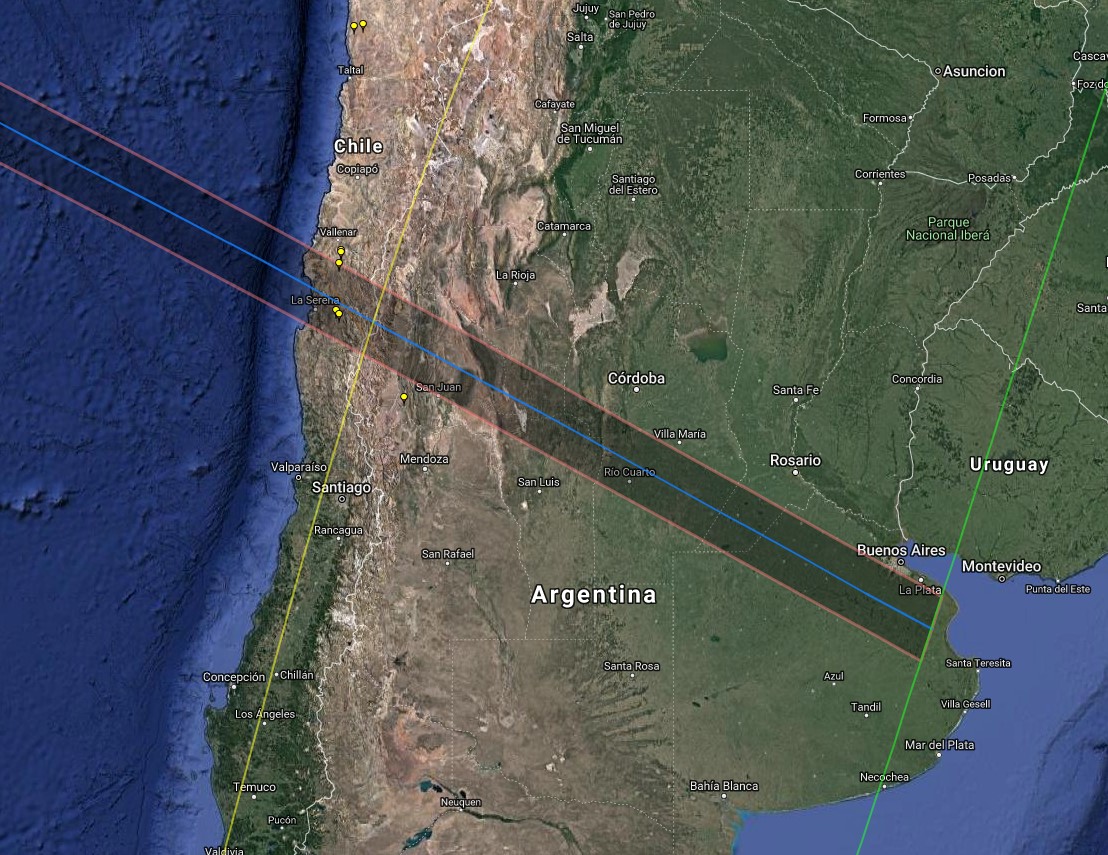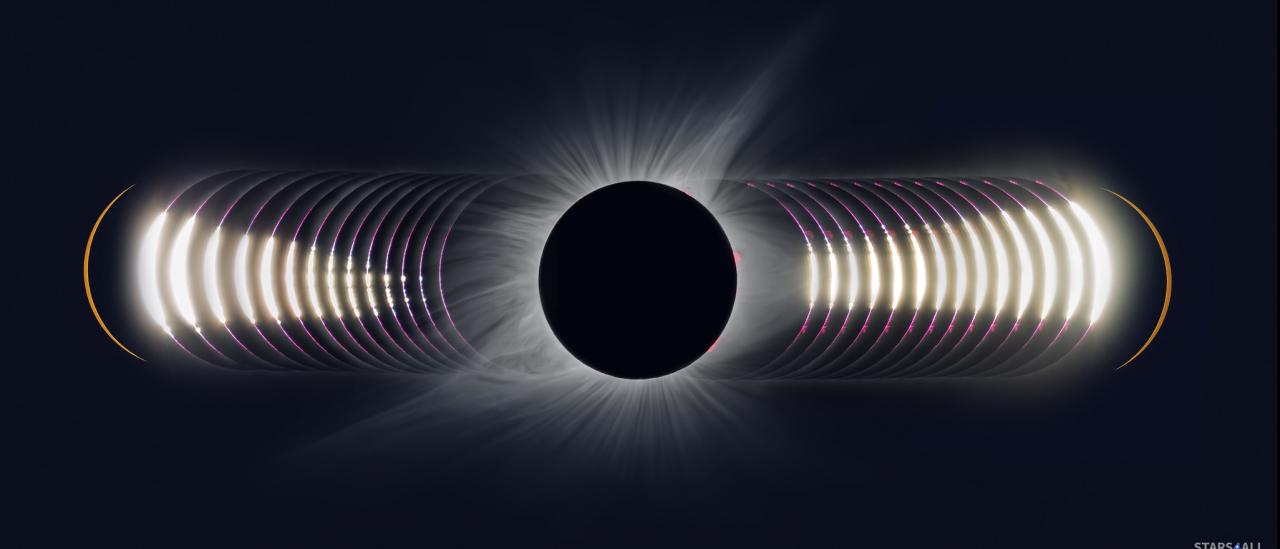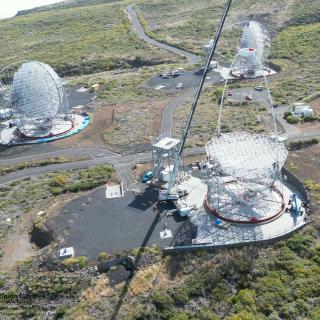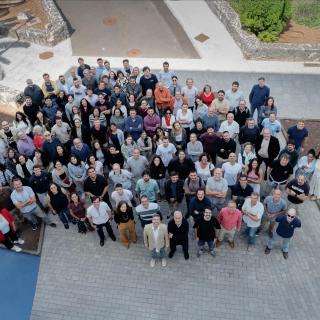A group of researchers, made up of astronomers from the IAC and members of the STARS4ALL project will travel to the CTIO (Cerro Tololol Inter-american Observatory), Chile, to observe and broadcast live this total eclipse of the Sun. The connection will take place at 19.20h Universal Time (UT) (one hour later in the Canaries, two hours later in central Europe, and 15.20 Chilean local time) on July 2nd. The complete phenomenon can be seen via the sky-live.tv web.
The Cerro Tololo Inter-American Observatory, (CTIO) is part of the National Optical Astronomical Observatory (NOAO) of the United States, of which the northern part is the Kitt Peak National Observatory (KPNO) in Tucson, Arizona. NOAO is operated by the Association of Universities for Research in Foreign Relations of Chile.

STARS4ALL is a Public Platform for the Promotion of Dark Skies in Europe via initiatives against Light Pollution (LP) known as, Light Pollution Initiatives. The LPI are local or global working groups who fight light pollution.
Miquel Serra-Ricart, who is in charge of the team involved, comments “It will be a complicated eclipse because as well as taking place in the southern winter the Sun will be only 13 degrees above the western horizon, almost setting. Being sited at the Cerro Tololo Observatory will be a big advantage will solve the logistic problems we have encountered during other eclipses.
Serra-Ricart, an astronomer at the Instituto de Astrofísica de Canarias (IACI) is an experienced eclipse observer. This will he the fifteenth expedition which he will be leading (see shelios.org). The last one was in 2017 in the American State of Idaho. “We waited many years for the “great American eclipse” and it did not let us down. It was a great experience, we obtained very good data, and over a million people connected to the broadcast”, he says.
At the Cerro Tololo Observatory and during the eclipse there will be a number of research activities whose details can be found at:
ctio.noao.edu/noao/content/Stroke-Astronomical-Luck-Solar-Science
Several photometers TESS-W developed at the Complutense University of Madrid (UCM) in the STARS4ALL project, will make measurements of luminosity and temperature during the eclipse. The data obtained will be available for educational activities, and they will be shown in real time at the portal tess-broadcasting.stars4all.eu
Three Spanish supercomputing centres, the Extremadura Centre of Advanced Technologies (CETA-CIEMAT) the Consortium of University Servers of Catalonia (CSUC) and the Instituto de Astrofísica de Canarias (IAC) will collaborate in the distribution of the broadcast on the web portal sky-live.tv
Contacto IAC: Miquel Serra-Ricart, investigador del IAC, mserra [at] iac.es (mserra[at]iac[dot]es)
- The website of the STARS4ALL project: http://www.stars4all.eu/
- The educational activities are available at:
- http://astroaula.net/recursos-didacticos/actividades/eclipse-atmosfera/
- Information about the broadcast: sky-live.tv/eclipse2019
- High resolution images of previous total solar eclipses
https://www.flickr.com/photos/65131760@N06/sets/72157634767436442/ - Images and videos of the last total eclipse of the Sun in Makay, Idaho, USA (2017https://flic.kr/s/aHsm3dzEbQ
- The website of the CTIO observatory: ctio.noao.edu/noao/
- Interactive map of the eclipse (portal of X.M. Jubier):
- http://xjubier.free.fr/en/site_pages/solar_eclipses/TSE_2019_GoogleMapFull.html
- Data on the luminosity/temperature during the eclipse
tess-broadcasting.stars4all.eu/d/eclipse_solar_2019_06_02/total-solar-eclipse-2019
Broadcasting channels
Youtube
Cerro Tololo Observatory, Chile (Image of the Sun, and commentaries): https://youtu.be/ncfHfAWId9w
Cerro Tololo Observatory, Chile (sky camera): https://youtu.be/B7BT2pGwll8
Facebook: https://www.facebook.com/skylivetv
APPENDIX 1. of the Eclipse from the Cerro Tololo Observatory (2nd July 2019)
Duration of the total eclipse of the Sun: 2 minutes 06 seconds
Local time = UT- 4 h
Central European Standard Time = UT+ 2 h
Canary Time =UT+ 1h
| Contacts, Total Solar Eclipse | Time (UT) |
| Beginning of partial eclipse (C1) | 19:23:10.5 |
| Beginning of total eclipse (C2) | 20:38:32.4 |
| Eclipse maximum: | 20:39:35.6 |
| End of total eclipse (C3) | 20:40:38.5 |
| End of partial eclipse (C$) | 21:46:34.5 |



